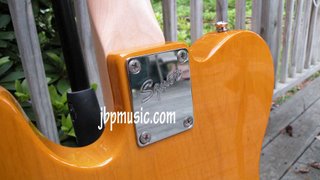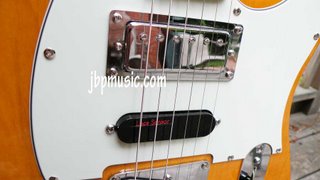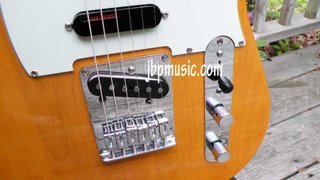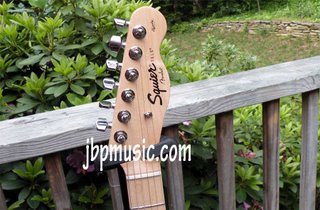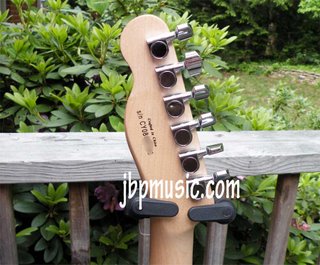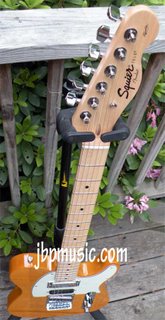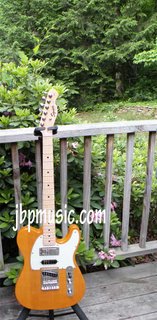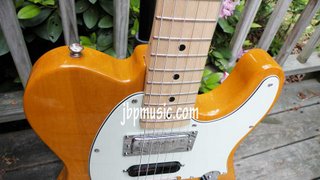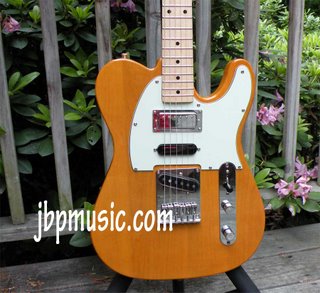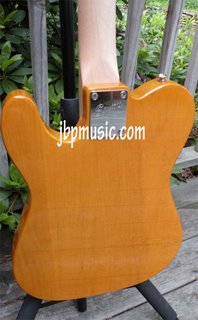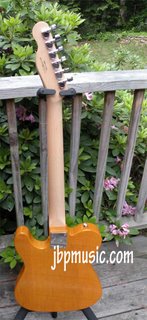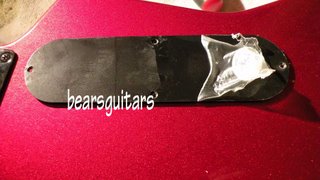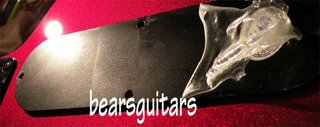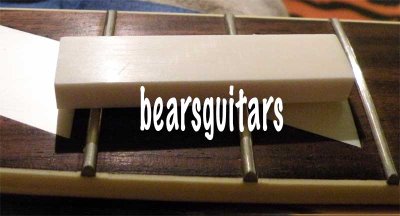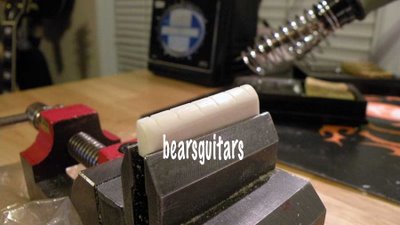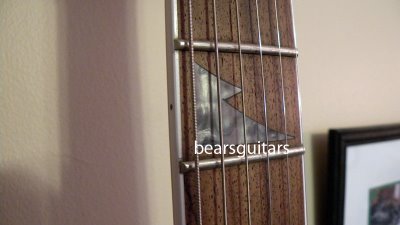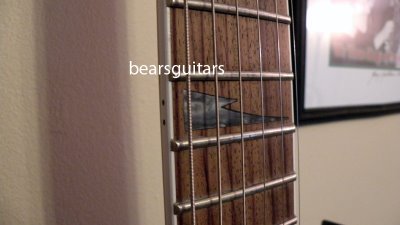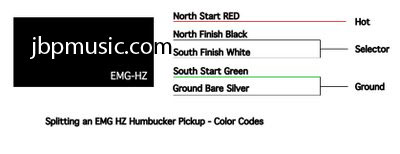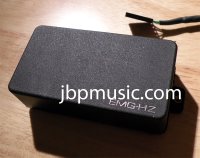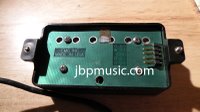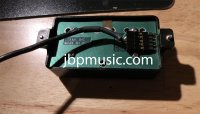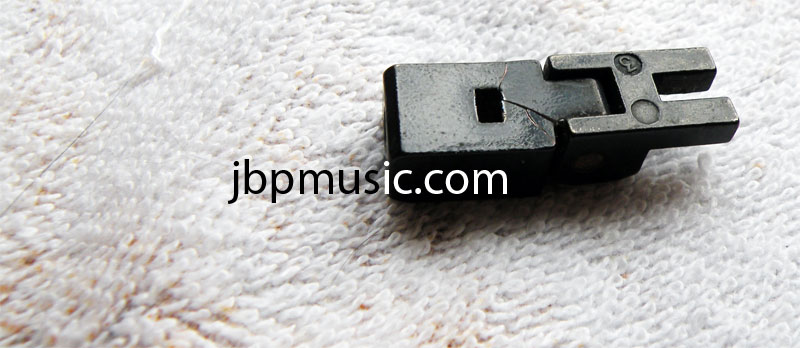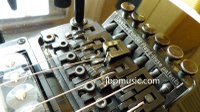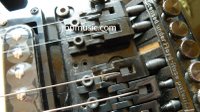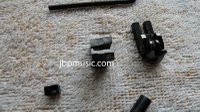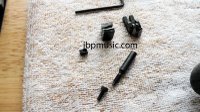A Black Lacquer Custom Stratocaster, Unique, Supremely Playable, Rich Sound
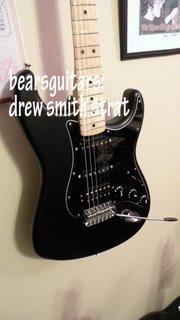
I had recent occasion to make a customized Strat for a local musician. The goal was to provide a black Strat with lots of tonal flexibility, REAL playability, unique visual and sound (but familiar, too).
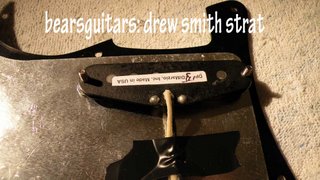
I began with a Fender FSR Straight Six Stratocaster: black nitrocellulose lacquer, a great maple neck with medium-jumbo frets, a good pickup route, and reasonable cost.
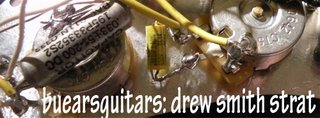
I searched extensively for the right pickguard, the right electronics, the right pickups, and the right wiring sequence for this instrument. After receiving a custom-made pickguard (wasn't pleased with it), I ended up buying a genuine Fender HSS B/W/B pickguard. I used the Straight Six's Fender Atomic humbucker on the bridge. After trial and error, I ended up using a GFS AlNiCo magnet middle pickup, with connections reversed (not reverse wound). I originally planned on a NICE USA SCN Fender pickup, but it sounded out of place (great! but not right with the other players - I wanted some vintage mixed with hotness, mixed with some new sound not heard on every other Strat out there). I ended up using a wonderful, sweet DiMarzio True Velvet pickup in the neck (I love those. I'll use one again in my next Strat creation, but maybe in the middle to give it some SWEET crunch and munch.)
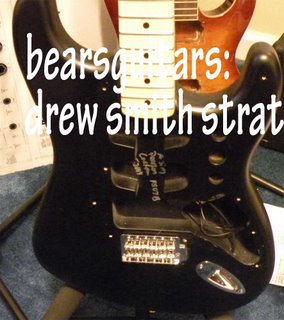
I used an unusual Sprague USA .0333uf capacitor on the central tone. I also decided to do a variant on the greasebucket and treble bleed mod thing with a nice resistor and a .001uf Mallory Mustard cap - twisted tight and soldered directly to the in and out leads on the volume pot. I did a common open copper ground, used silver-bearing solder, genuine Fender potentiometers, a genuine Fender (looks like a CRL?) 5-way blade switch.
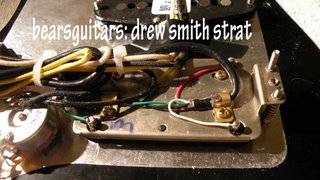
So, we get:
Neck
Neck and Middle humbucking
Middle
Middle and split coil of Atomic Humbucker
Full Atomic Humbucker
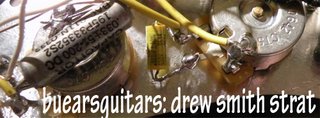
I used shielded wiring for the signal lead from the Switchcraft USA jack, and good old American copper wiring. I tied everything off just right so that the pickguard literally drops in the Strat's cavity with NO wiggling or fiddling. Just wire in the Jack, the ground, and drop it on.

I used genuine Fender aged (sort of cream parchment) parts for the back plate, the knobs, switch tip, and pickup covers for the singles. I even used real Fender nickel screws everywhere.

As a bit of a signature, I put a Fender "F" neck plate on the neck/body screw joint along with some nice Fender neck screws. I leveled, crowned, dressed and hand polished the frets and even softened the edge of the fretboard wood to feel smooth to the hand. Spent a good amount of time taking a Fender nut and making it just right for this guitar. Loaded it up with Fender .009-.042 strings, set the intonation and action... and the sound has been screaming joy ever since.
Labels: Atomic Humbucker, CRL, CTS, custom, custom nut, DiMarzio, Drew Smith, Fender, GFS, Mallory, Sprague, strat, stratocaster
